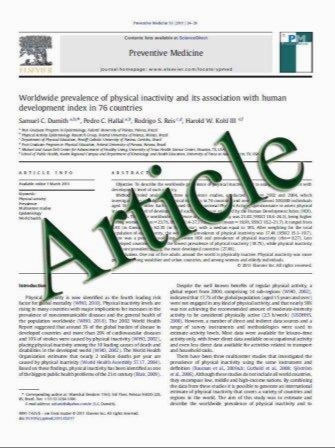Nurse case-manager vs multifaceted intervention to improve quality of osteoporosis care after wrist fracture: randomized controlled pilot study
- نوع فایل : کتاب
- زبان : انگلیسی
- مؤلف : S. R. Majumdar & J. A. Johnson & D. Bellerose & F. A. McAlister & A. S. Russell & D. A. Hanley & S. Garg & D. A. Lier &W. P. Maksymowych & D. W. Morr
- چاپ و سال / کشور: 2010
Description
Summary Few outpatients with fractures are treated for osteoporosis in the years following fracture. In a randomized pilot study, we found a nurse case-manager could double rates of osteoporosis testing and treatment compared with a proven efficacious quality improvement strategy directed at patients and physicians (57% vs 28% rates of appropriate care). Introduction Few patients with fractures are treated for osteoporosis. An intervention directed at wrist fracture patients (education) and physicians (guidelines, reminders) tripled osteoporosis treatment rates compared to controls (22% vs 7% within 6 months of fracture). More effective strategies are needed. Methods We undertook a pilot study that compared a nurse case-manager to the multifaceted intervention using a randomized trial design. The case-manager counseled patients, arranged bone mineral density (BMD) tests, and prescribed treatments. We included controls from our first trial who remained untreated for osteoporosis 1-year postfracture. Primary outcome was bisphosphonate treatment and secondary outcomes were BMD testing, appropriate care (BMD test-treatment if bone mass low), and costs. Results Forty six patients untreated 1-year after wrist fracture were randomized to case-manager (n=21) or multifaceted intervention (n=25). Median age was 60 years and 68% were female. Six months post-randomization, 9 (43%) case-managed patients were treated with bisphosphonates compared with 3 (12%) multifaceted intervention patients (relative risk [RR] 3.6, 95% confidence intervals [CI] 1.1–11.5, p=0.019). Case-managed patients were more likely than multifaceted intervention patients to undergo BMD tests (81% vs 52%, RR 1.6, 95%CI 1.1–2.4, p=0.042) and receive appropriate care (57% vs 28%, RR 2.0, 95%CI 1.0–4.2, p=0.048). Case-management cost was $44 (CDN) per patient vs $12 for the multifaceted intervention. Conclusions A nurse case-manager substantially increased rates of appropriate testing and treatment for osteoporosis in patients at high-risk of future fracture when compared with a multifaceted quality improvement intervention aimed at patients and physicians. Even with casemanagement, nearly half of patients did not receive appropriate care. Trial Registry clinicaltrials.gov identifier: NCT00152321
Osteoporos Int (2011) 22:223–230 DOI 10.1007/s00198-010-1212-7 Received: 18 December 2009 / Accepted: 3 February 2010 / Published online: 1 April 2010


